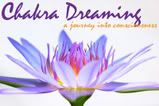I've found a site for Aussie Wiccans which has some good information for those in the Southern Hemisphere. I'm not sure how old the information is, so I can't vouch for the exact dates, so please take them as approximate, and I will endeavour to get the right dates soon.
Lammas / Lughnassadh 2nd February: Lughnassadh is the Celtic festival in honour of the sun God and is actually celebrated on the 7th. Lammas is a harvest festival, at which time it is appropriate to give thanks for the bounty of the earth. It is the first of three harvest sabbats. The sun god Lugh is celebrate as he is the god of harvest, fire and light. It is at this time that the first crops, usually grains and vegetables are ready to be harvested. The baking of bread is traditionally the way to celebrate this day, as is the making or purchasing of corn dolls to guard your home for the coming season. This is the celebration of the first fruits of the harvest. The sun king, now dark Lord, gives his energy to the crops to ensure life while the mother prepares to give way to her aspect as the Crone. Now is a good time to teach what you have learned, to share the fruits of your acheivements with the world. Other than bread baking and dolls, you can decorate your altar with fruit and vegetables of the harvest.
Autumn Equinox / Mabon 20th-23rd March: Mabon is the second harvest, and goddess mourns her fallen consort, but the emphasis is on the message of rebirth that can be found in the harvest seeds. You can celebrate by decorating the house with dried and coloured ears of corn to remind yourself and your home of the end of the harvest season. Again, the day and night are of equal length, and we give thanks for the last fruits of the harvest. Mabon marks the end of the second harvest, a time when the majority of the crops are gathered. The Goddess enters the Crone stage at this time. At the Autumn Equinox, the days and nights are equal. It is a time of balance, but light gives way to increased darkness. It is a good time to walk in the forests, gathering dried plants for use as altar decorations or herbal magick, Cornbread and cider are good additions the the festivites and Autumn leaves make great altar decorations.
Samhain - April 30th: Samhain, popularly known as Halloween is the witches’ New Year. This is the last of the three harvest sabbats, marking the end of the growing seasons. This is a time when the veil between the living and the dead is at its thinnest. Deceased ancestors and other friendly spirits are reunited with loved ones. It is a nice gesture to leave candles in the windows and plates of food for the visiting spirits. Divination is also heightened on this night. Autumn foliage and other autumny items can be used for altar decorations.
Yule - 20th-23rd June: Yule or winter solstice coincides closely to the christian christmas celebration even though people in the southern hemisphere celebrate Yule mid-year. Yule is all about winter. Hanging bells is a good custom, so you know when the wood spirits are frolicking about your home. The colours of this season are red and green. A lesser known tradition is burning the Yule log. Magickal symbols are carved into a log prior to setting it ablaze on the evening before Yule. A piece of the Yule log should be kept to protect the home throughout the year from negative energies and to light next year's log. If you can't burn a Yule log, find the biggest red candle you can get your hands on and carve symbols into its side. Surround it with mistletoe and holly, cedar and/or rosemary, light and let it burn all night long to ensure a prosperous year of warmth and light.Yule is a celebration of rebirth of the Sun. The god who died at Samhain is born from the virgin goddess. This the time of the year when the goddess turns the wheel of the year to its beginning point. This is the shortest day of the year and it celebrates the return of the god as seen in the lengthening of daylight. Here, the longest night of the year, the goddess gives birth to the sun child and hope for new light is born. Yule is a time of awakening to new goals and leaving old regrets behind.
Imbolc / Candlemas - 2nd August: Candlemas involves celebrations of banishing the winter and welcoming the spring. Light a candle in every room of the house or turn on all the lights for a moment or two to welcome back the sun. At the time of Candlemas, the newborn sun god is seen as a small child nursing from his mother. At this phase of the cycle, winter is swept away and new beginnings are nurtured. Some Wiccan traditions and groups favour this time of year for initiations into the craft. The goddess becomes the Maiden again as the wheel turns towards spring. It a celebration of Spring and the new life it represents.
Ostara / Spring Equinox 20th-23rd September: The Spring Equinox is the point of equilibrium - the balance is suspended just before spring bursts forth from winter. A good way to celebrate is to half fill a bown with water and place a selection of flowers into it for a display in a prominent position in the home. The night and day are of equal length at the equinoc and Ostara is the festical of balance and fertility. It is a celebration of of birth and new life. A day when death has no power over the living. This is the time of the official return of the young goddess after her winter hibernation. It is believed that the goddess and young god consumed their love, from this the goddess became pregnant with the god to be born at Yule. Traditionally Ostara us a time for collecting wild flowers, walking in nature's beauty and cultivating herbs. This is the time to free yourself from anything in the past that may be holding you back.
Beltane - 31st October - November 1st: Beltane is the celebration of the approach of summer, when breezes are scented and the evenings are getting warm and the divine union of the Lord and the Lady. Celebrations can include weaving a web of life around the May Pole and leaping the Beltane fire for luck. Lilacs and/or Hawthorn should be brought inside on this day, along with flowers of all kinds to represent the fertility of the earth. This is a festival of love, lust and fertility. This Sabbat celebrateslife above all else. It is a festival of fertility to bring on the bountiful crops planted at the beginning of Spring. Pagans of the old days, at this time of year used to ride broomsticks and jump into the air to show the crops how high to grow (hence the myth of witches flying on broomsticks). The May Pole was also used at this time to symbolise the union of the God and Goddess with the weaving of ribbons together in mock sexual union. The Goddess enters the Mother phase at this time. Wiccan Handfastings are very common at this festival. This is a time of self-discovery, love, union and developing your potential for personal growth. Beltane is a time of new life. It is a time when baby animals are born, new plants grown shoots, flowers bloom and trees rebirth their leaves. Many like to celebrate Beltane by decorating their homes and themselved with fresh flowers, or by stringing up greenery around their homes and offices. Sending flowers to loved ones, planting new gardens, cleaning out the cupboards and general spring cleaning are all traditional Beltane gestures. Alot of witches celebrate fertility at this time, focusing on the cauldron for their main spell ideas, the cauldron representing all that is feminine. Others perfer the older tradition of dancing around the May Pole, a far more masculine symbol of fertility. Favourite Beltane past times include plaiting and weaving, and in general anything where you join two substances together to make a third. Traditional Beltane foods are anything dairy such as custard and ice-cream etc, but anything representing the sweetness of life would be just as appropriate. Just remember to celebrate love and life.
Summer Solstice/Lithia 20th-23rd December: Your Midsummer's dreams will be more lucid, so adopting new psychic dream routines is recommended. A fire lit and kept alight till midnight brings good luck to the home and its occupants. This is a time to perform rituals for personal power and protection, to celebrate the sun Lord's powers. This is the longest day of the year and the Sun God is at his strongest. The Goddess is heavy with pregnancy just as the earth is ready for the harvesting. It also marks the waning of the year as each day becomes shorter, heralding the onset of Autumn and Winter. The Summer Solstice, the longest day, is a time of triumph and light. In many wiccan celebrations, this is the Oak King, who represents the waxing year, is triumphed over the Holly king, who represents the waning year. The two are actually one; the oak king is the growing youth, while the holly king is the mature man. Healings and love magick are especially suitable at this time. Midsummer night's eve is supposed to be a good time to commune with field and forrest spirits
Monday, 4 February 2008
Southern Hemisphere Pagan Calendar
Subscribe to:
Post Comments (Atom)








5 comments:
Mich, sorry we keep missing each other :)... will call you this week.
Love Bx
Thank you Mich - this is just the sort of info I needed - it's just fantastic! Will check out Aussie Wiccans too.
Coool!!! Our family celebrate each of these, in some small way, 'up here' in the UK, as well as the major Christian festivals... (which of course fall roughly around similar dates!! A good way for the R.C. church to convert all those ancient pagans to the new faith eh!)
It is pretty weird reading these "the wrong way round" but I am very happy for you that you have found an Aussie Wican Calender - it must be tricky to keep converting them all the time! (like trying to find left-handed sissors :-))
Love and Light. E
It is amazing to me that by staying with the wheel of the year, we can access the archetypal energy of transformation from wherever we live. Also inspiring is the inherent balance we create just by honoring the cycles in the areas we each live (i.e. your Summer Solstice is my Winter Solstice). Natural harmony! Thanks for sharing!
Thank you so much for this. Most of my friends live in the Northern Hemisphere. Assume we all do. I needed more information about us living in the Southern Hemisphere.
Kym
Post a Comment